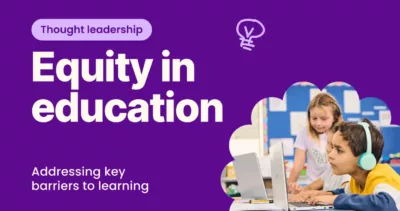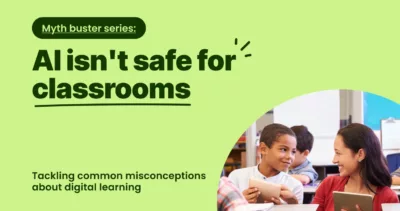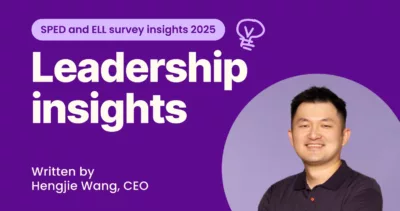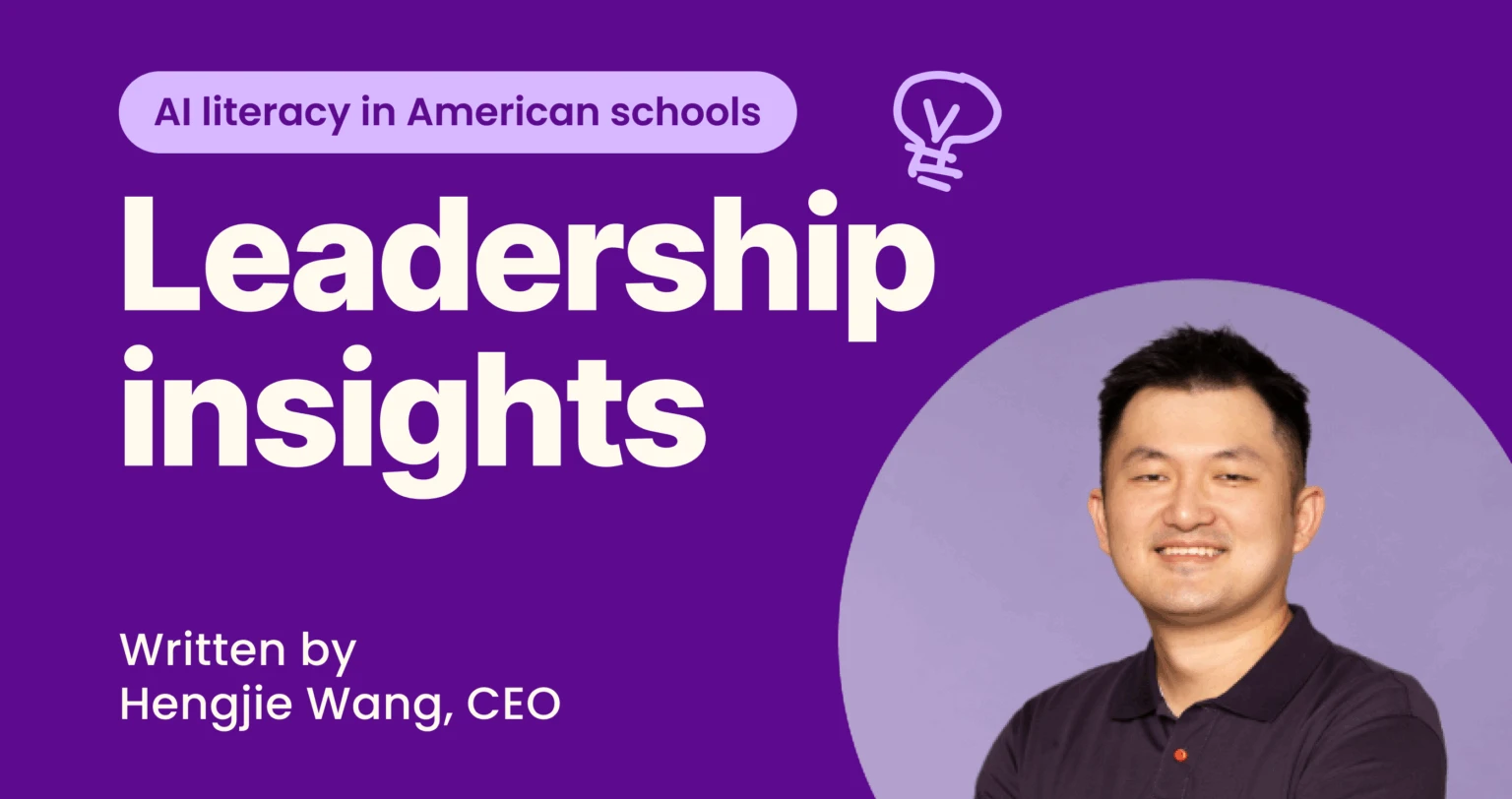The recent Executive Order by President Trump entitled, “Advancing artificial intelligence education for American youth” represents an historic shift in America’s education priorities.
It comes at a time when Artificial Intelligence (AI) is rapidly reshaping the global economy, driving innovation, and transforming how societies function. For America’s future workforce – i.e. the country’s student population – understanding AI is essential.
Currently, the United States educates approximately 49.5 million K-12 students, representing one of the largest student populations worldwide (Source: National Center for Education Statistics, 2024). Those students have now been identified as a priority population in the administration’s efforts to future-proof the world’s largest and most influential economy against rising competitor threat.
Recognizing the challenges, in parallel with the wide-ranging potential afforded by the evolution of AI, the Trump administration has moved to prioritize embedding AI-driven learning across American schools, setting ambitious goals to enhance student achievement and bridge global competitiveness gaps.
As the Executive Order on April 23 stated: “It is the policy of the United States to promote AI literacy and proficiency among Americans by promoting the appropriate integration of AI into education, providing comprehensive AI training for educators, and fostering early exposure to AI concepts and technology to develop an AI-ready workforce and the next generation of American AI innovators.”
In parallel, President Trump also stood-up a Task Force on AI Education, which will be chaired by Michael Kratsios, the White House Director of Science and Technology Policy. He’ll be supported by experts and leaders from a broad range of specialties including Labor, Agriculture and crypto.
Against that backdrop, this article explores why improving AI-literacy is critical, how the U.S. stacks up internationally, the implications of recent policy changes, and practical solutions – such as Kami’s innovative AI-driven platform – for schools to cultivate AI skills among K-12 students effectively.
Global context and U.S. education standings
In order to fully appreciate the urgency behind AI-literacy initiatives in the United States, it’s helpful to examine the broader global context.
America is currently the world leader in AI capabilities, but competition is fierce and peer progress is fast. The surprise emergence of DeepSeek (a rival to Google Gemini and ChatGPT) in January from China, is a prime example of global ambition and credibility.
Unsurprisingly, this race to be the best has merged into classrooms around the world. Countries like China, Canada and the UK are all good examples of those which made early moves to embed tech literacy programmes across their equivalent K-12 student cohorts.
There is no doubt that such an ambitious and competitive global landscape will have influenced (and likely sped up) the Trump administration’s plans for renewing educational strategies that rapidly equip American students with 21st-century skills, particularly in AI.
In essence, the U.S. government has directly linked technological proficiency with enhanced global competitiveness. The targeted investment outlined by federal policymakers aims to foster a generation of technologically savvy students, capable of driving future innovation, improving economic competitiveness, and maintaining global leadership in technology and research.
Federal funding and the prioritization of AI
The April directive supports schools with financial resources to implement AI-driven programs, upgrade digital infrastructure, and train educators in AI literacy.
Crucially, it provides resources for districts, particularly those in historically underserved regions, to access high-quality AI education tools, ensuring equitable distribution of skills and opportunities.
Meanwhile, the Department of Education is tasked with clarifying any implications for Title funding, within 90 days (just in time for the back-to-school period).
Broadly speaking, there are certain characteristics which have correlated with lower access to AI resources up to now:
- High-poverty districts: Districts with higher poverty rates often have limited resources to invest in new technologies, including AI tools. A RAND study found that in fall 2023, only 6% of high-poverty districts had trained teachers on AI use, compared to 43% of low-poverty districts.
- Rural districts: Rural areas may face challenges such as inadequate infrastructure and limited access to professional development opportunities, hindering the adoption of AI in education. A study by the Center on Reinventing Public Education (CRPE) highlighted that suburban, majority-white, and low-poverty school districts are about twice as likely to provide AI-use training for their teachers than urban or rural or high-poverty districts.
- Districts with limited digital infrastructure: Districts lacking robust digital infrastructure, including reliable internet access and up-to-date hardware, are less equipped to implement AI tools effectively. Initiatives like the ConnectEd program have aimed to address these disparities by increasing internet connectivity in schools, particularly in underserved areas.
By prioritizing AI literacy, U.S. education policymakers intend to empower all students to become adept at using technology, thus fostering a more equitable educational landscape and closing achievement gaps.
Kami: A practical solution for AI-led education
As districts strive to meet the ambitious goals set by federal initiatives, the need for trusted and efficient technology partners to deliver effective AI-driven learning has clearly risen.
I’m very proud that Kami stands out as a leading educational technology platform, providing AI-powered solutions designed specifically for K-12 environments. Our intuitive tools not only support classroom productivity but fundamentally enhance learning through interactive, adaptive, and personalized features.
Kami also integrates directly with Learning Management Systems (LMS), enabling seamless classroom management, assessment, and instruction through innovative AI features. For example, Kami’s AI-powered assessments offer automated grading and personalized feedback, significantly reducing administrative workload while providing immediate insights into student performance.
Additionally, Kami’s new AI-powered tools, highlighted in recent product updates (What’s new, April 2025), enhance language comprehension and offer multimodal explanations to accommodate the needs of all learners.
Critically, Kami facilitates teacher training and professional development in AI literacy, enabling educators to embed these tools confidently into everyday teaching practices.
Therefore, by leveraging Kami, districts can rapidly scale AI competency across schools, providing both students and teachers with necessary skills in alignment with federal goals.
Summary
Improving AI literacy in American schools is no longer optional. It is imperative. With the United States eager to improve its position relative to key educational benchmarks, and to bolster its world-leading economy for generations to come, integrating AI into the K-12 curriculum represents a significant opportunity that should have a wide-reaching and long-lasting impact.
Collectively, it also means that strategic partnerships with innovative providers like us at Kami become even more critical.
Through Kami’s accessible and powerful AI tools, educators and students are well-positioned to enhance learning outcomes significantly, thus preparing the next generation to lead confidently in a technology-driven world.
As always, we’ll endeavour to share fresh insights and opinions on our website in the months ahead.
If you do have any questions in the meantime, please feel free to reach out to me or the wider team at Kami. We’re always happy to help.
References:
- National Center for Education Statistics. (2024). “Fast Facts: Back to School Statistics.”
- OECD. (2022). “PISA Results in Focus.“
- White House. (2025). “Advancing Artificial Intelligence Education for American Youth.”
- Kami. (2025). “Kami Updates.”
- RAND, ‘More districts are training teachers on artificial intelligence’ (April 8, 2025)
- CRPE, ‘AI is coming to classrooms but who will benefit?’ (May 2024)
Blogs you may also like

Improving equity in childhood learning

Myth buster: AI isn’t safe for schools



